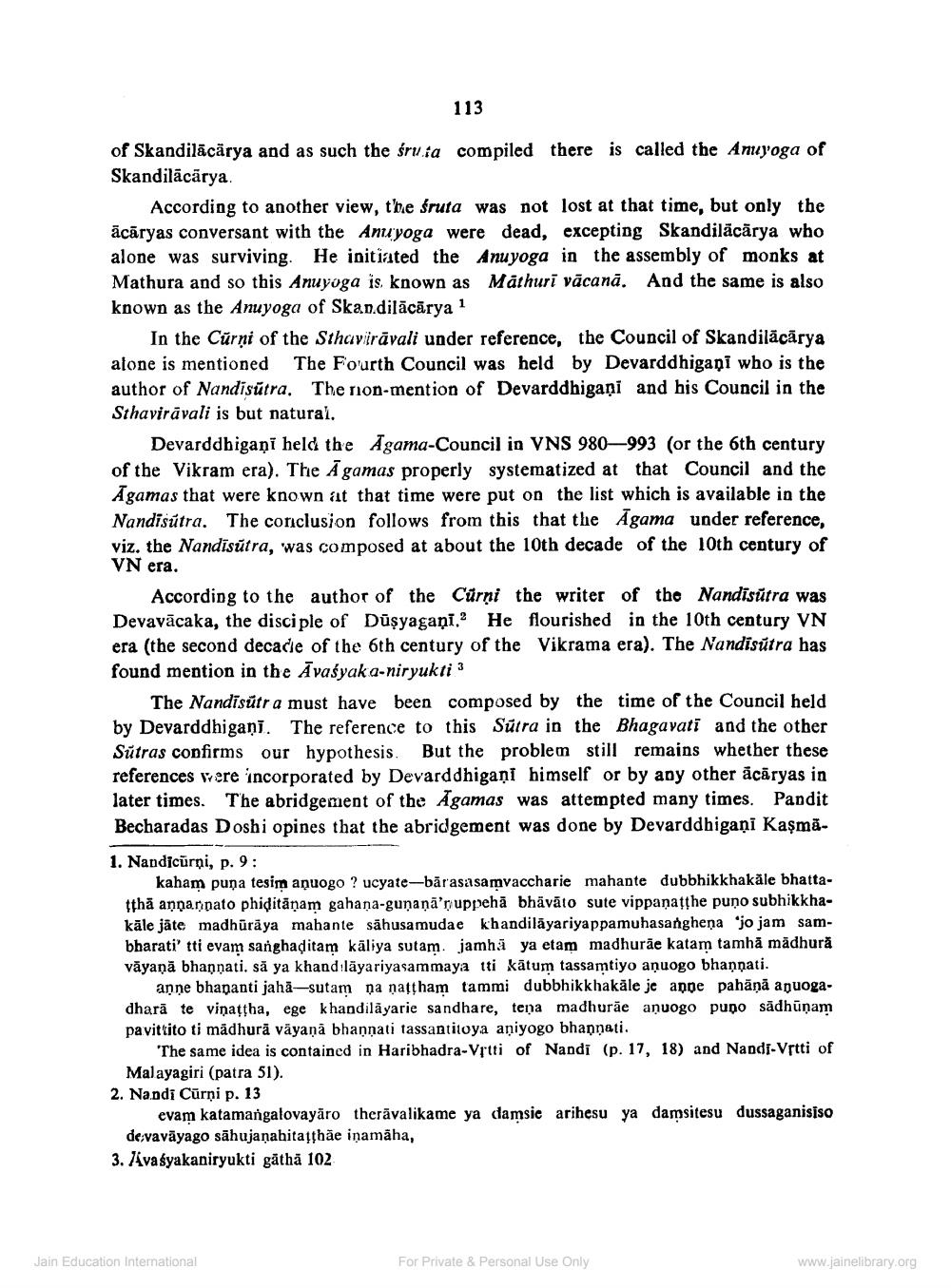________________
113
of Skandilācārya and as such the śruia compiled there is called the Anuyoga of Skandilācārya
According to another view, t'he śruta was not lost at that time, but only the ācāryas conversant with the Anu'yoga were dead, excepting Skandilācārya who alone was surviving. He initiated the Anuyoga in the assembly of monks at Mathura and so this Anuyoga is known as Mathuri vācanā. And the same is also known as the Anuyoga of Skandilācārya 1
In the Cūrņi of the Sthaviravali under reference, the Council of Skandilācārya alone is mentioned The Fourth Council was held by Devarddhigani who is the author of Nandisútra. The non-mention of Devarddhigani and his Council in the Sthavirāvali is but natural,
Devarddhigaại held the Agama-Council in VNS 980—993 (or the 6th century of the Vikram era). The Ā gamas properly systematized at that Council and the Agamas that were known at that time were put on the list which is available in the Nandisútra. The conclusion follows from this that the Agama under reference, viz. the Nandisútra, was composed at about the 10th decade of the 10th century of VN era.
According to the author of the Cürni the writer of the Nandīsūtra was Devavācaka, the disciple of Düşyagaņi. He flourished in the 10th century VN era (the second decade of the 6th century of the Vikrama era). The Nandisutra has found mention in the Āvaśyak a-niryukti 3
The Nandisütr a must have been composed by the time of the Council held by Devarddhigani. The reference to this Sūtra in the Bhagavati and the other Sutras confirms our hypothesis. But the problem still remains whether these references were incorporated by Devarddhigaại himself or by any other acāryas in later times. The abridgement of the Agamas was attempted many times. Pandit Becharadas Doshi opines that the abridgement was done by Devarddhigaņi Kaşmi1. Nandicūrni, p. 9:
kaham puna tesim aņuogo ? ucyate-bārasasamvaccharie mahante dubbhikkhakäle bhattatthă annanpato phidităņam gahana-gunanā'r uppehā bhāvāto sute vippanatthe puno subhikkhakāle jāte madhuraya mahante sāhusamudae khandilayariyappamuhasanghena 'jo jam sambharati'tti evam sanghaditam kāliya sutam. jamhã ya etam madhurāe katam tamhă mădhură vāyaņā bhannati, să ya khandilayariyasammaya tti kätum tassamtiyo aņuogo bhannati.
anne bhapanti jaha-sutam na nattham tammi dubbhikkhakāle je anne pahāņā anuogadharā te vinattha, ege khandilayarie sandhare, tena madhurāe anuogo puno sādhūnam pavitrito ti madhurā vāyana bhannati tassantitoya aņiyogo bhannati.
The same idea is contained in Haribhadra-Vrtti of Nandi (p. 17, 18) and Nandi-Vrtti of Malayagiri (patra 51). 2. Nandi Cürni p. 13
evam katamangalovayāro therävalikame ya damsic arihesu ya damsitesu dussaganisiso desvaväyago sāhujanahitajthäe inamäha, 3. /vasyakaniryukti gåtha 102
Jain Education International
For Private & Personal Use Only
www.jainelibrary.org




